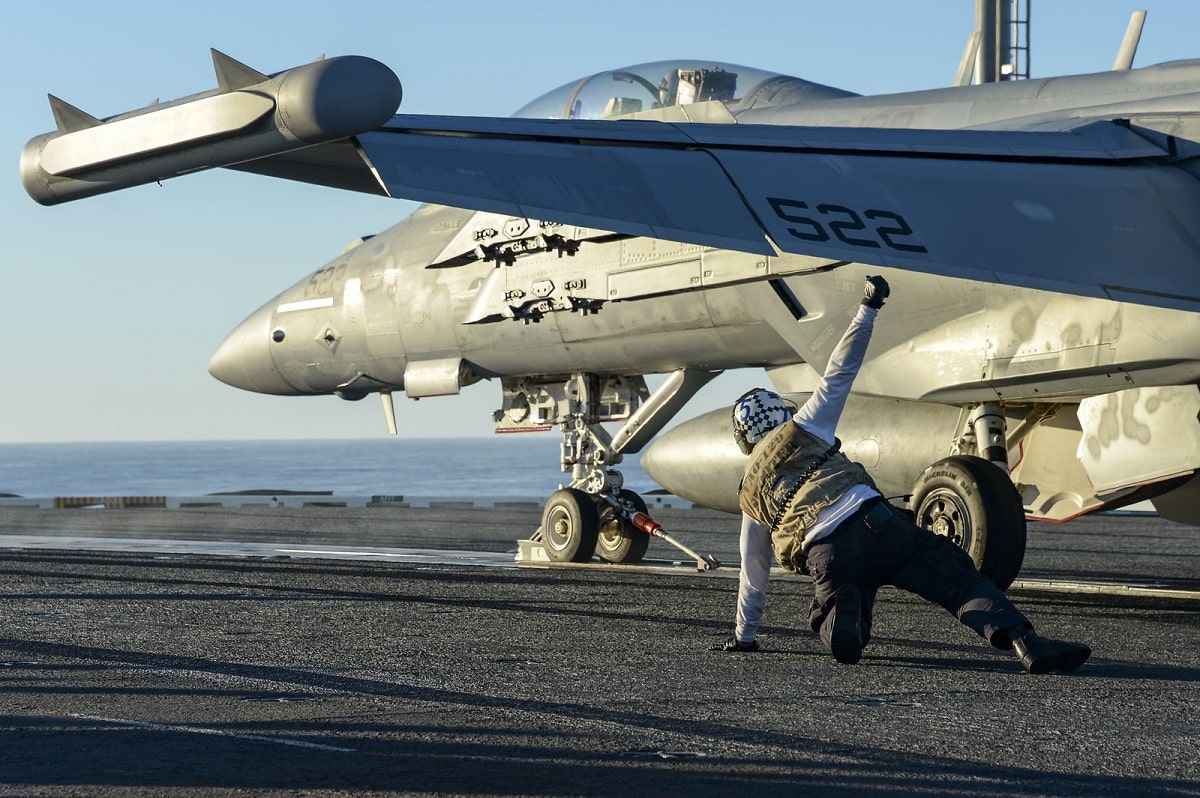Meet the USS Carl Vinson: Today, seven of the United States Navy’s 10 Nimitz-class carriers are named for past presidents, while the lead vessel honors World War II officer Admiral Chester Nimitz, the United States’ last surviving officer who served in the rank of fleet admiral. Then there is the CVN-70, which is named for a man who made significant contributions to the U.S. Navy. The late Rep. Carl Vinson (D-Georgia), who represented his state in the House of Representatives for 51 years, earned the nickname “swamp fox” and “the Admiral” due to his interest in U.S. naval affairs.
Rep. Vinson served as chairman of the House Naval Affairs Committee in 1931 and played a pivotal role in guiding the U.S. Navy through the Second World War and the early Cold War. He was a strong supporter of the Two-Ocean Navy Act, which dramatically increased the naval budget by 70 percent.
Meet the USS Carl Vinson
The third nuclear-powered Nimitz-class carrier, USS Carl Vinson (CVN-70), was launched in 1980 and officially entered service in 1983. As with other carriers in her class, CVN-70 can carry more than 65 fixed and rotary-wing aircraft, while she can travel more than 5,000 nautical miles in less than seven days in support of national tasking.
Though the late Rep. Vinson was never in battle, the carrier named in his honor has a notable combat record. CVN-70 was deployed during Operational Desert Strike, Operation Iraqi Freedom, Operation Southern Watch, and Operation Enduring Freedom. The warship has earned multiple Battle Effectiveness Awards – or Battle “E” – for its role in naval operations in 1990, 1996, 1998, 2001, 2004, 2011, 2015, and 2018. Carl Vinson has been bestowed additional awards including the Navy Unit Commendation, Meritorious Unit Commendation, and Sea Service Deployment Ribbon.
Following the successful Navy SEAL raid that led to the killing of Osama bin Laden, the terrorist leader’s body was buried at sea in 2011 from the deck of the warship.
On Veterans Day of the same year, the vessel hosted the first NCAA basketball game – the “Carrier Classic” between North Carolina and Michigan State – ever played on the deck of a U.S. Navy aircraft carrier.
First Carrier to Operate with the F-35
USS Carl Vinson was deployed twice to the Western Pacific in 2017 and 2018 respectively and was the carrier that supported the Lockheed Martin F-35C Lightning II tests during the Rim of the Pacific 2018 exercise.
CVN-70 had completed several certifications for the F-35C, including flight deck certification (FDC) and carrier air traffic control center (CATCC) certification. During a 17-month-long extended maintenance period that was completed in September 2020, the carrier received major upgrades in support of the fifth-generation aircraft. Carl Vinson then became the first aircraft carrier equipped to support both the F-35C Lightning II and CMV-22 Osprey.
Upgrades included enhanced jet blast deflectors able to take the increased heat generated by the F-35C and the addition of the Autonomic Logistics Information System (ALIS), the new computer network that supports the unique maintenance and tactical operations functions of the advanced aircraft.
Recommended: Why China’s Economy Could Collapse
Recommended: Why No F-35 in Top Gun: Maverick?
Recommended: Why Using the F-35 in Top Gun: Maverick Made Sense
In March 2021, a “proof-of-concept” exercise was conducted to highlight how a deployed carrier could receive the critical parts to successfully maintain the U.S. Navy’s carrier variant of the F-35 Lightning II fifth-generation jet fighter.
In February 2022, USS Carl Vinson returned to her homeport of San Diego after a six-and-a-half-month deployment to the Indo-Pacific. It was the Navy’s first deployment of the “air wing of the future,” as Carrier Air Wing 2’s F-35Cs concluded its first-ever operational deployment. During that time, the air wing conducted more than 15,000 flight hours and more than 15,000 combined carrier arrested landings and catapult launches.
Now a Senior Editor for 1945, Peter Suciu is a Michigan-based writer who has contributed to more than four dozen magazines, newspapers and websites. He regularly writes about military hardware, firearms history, cybersecurity and international affairs. Peter is also a Contributing Writer for Forbes.

